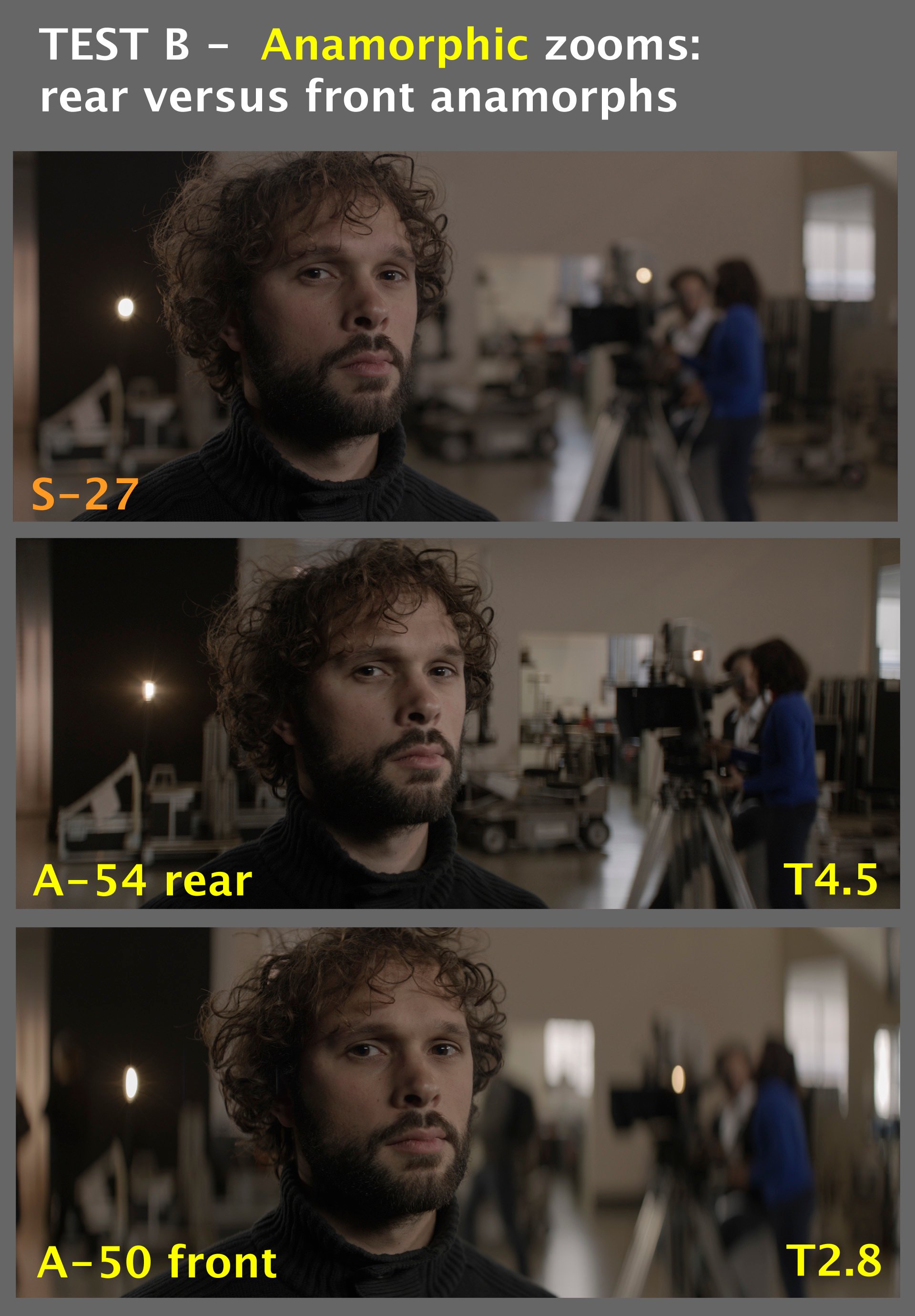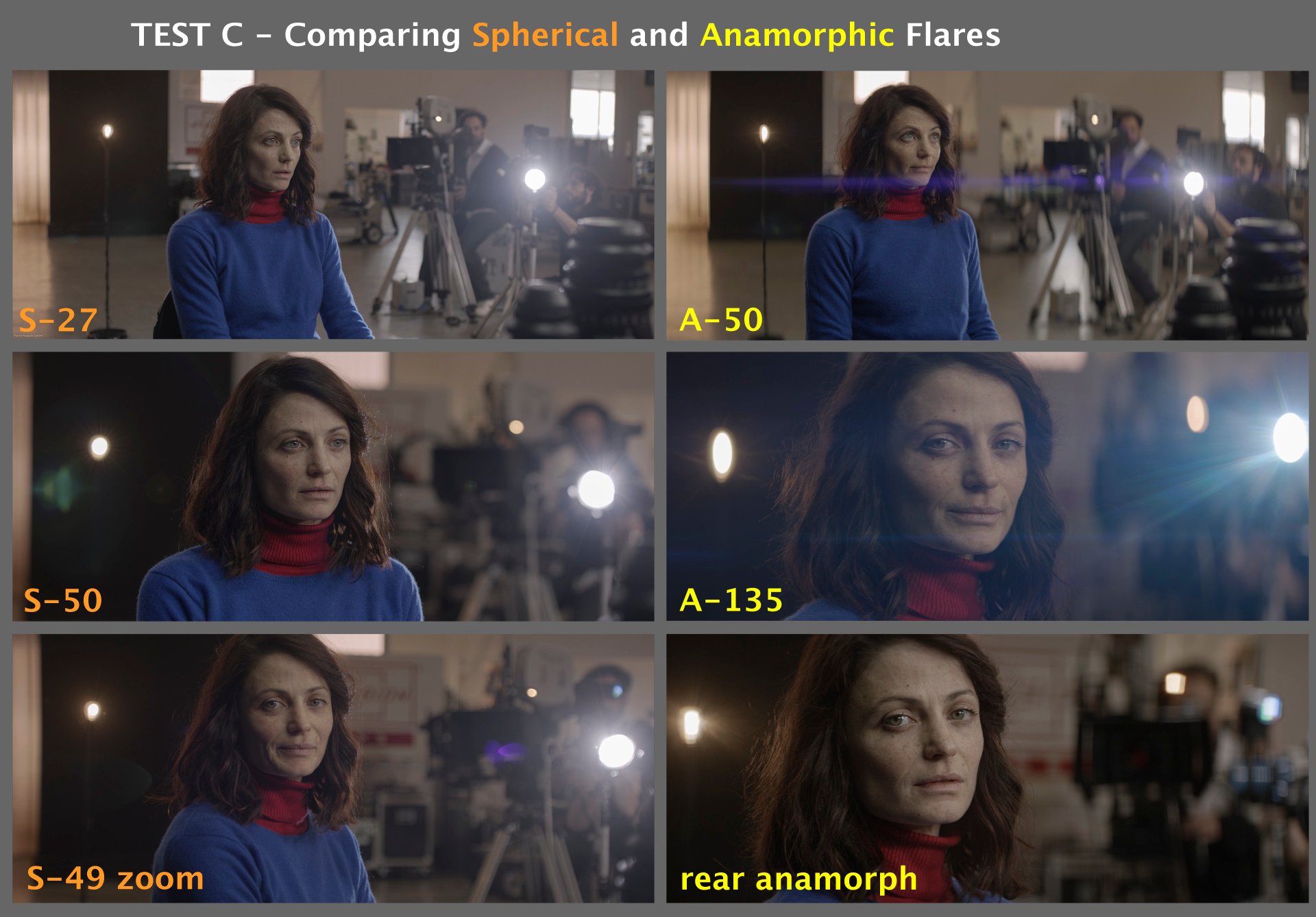What is the typical maximum number of people to occupy a camera car/ process trailer?
Anamorphic lenses capture an extremely wide view without distorting faces, even with extreme closeups. The lenses tin help create ultra-wide rectangular attribute rations, oval broken (out of focus area of the images), and long horizontal lens flares. There are two types of lens that films use: spherical and anamorphic. A spherical lens is more than mutual and projects unaltered round images to the sensor. An anamorphic lens projects oval-shaped images to the sensor past using optical elements to fit more than horizontal data to the scene. The captured image is then stretched horizontally in mail service-production or when projects to announced equally intended.
The Birth of Widescreen and the History and Motivation for Anamorphic Lens
The development of widescreen in the early 1950s aimed to make movies more heady. Film studios hoped its new perspective would encourage people to return to the movie theater rather than staying indoors watching tv set.
Traditional widescreen masked the top and lesser of the 35 mm moving-picture show. This cropped footage wastes a part of each frame. When the smaller frames were projected onto screens, they had poor resolution and appeared grainy.
Anamorphic lenses used the unabridged 35 mm frame. The horizontal centrality was compressed by a factor of two so the images could occupy the frame's full height. Careful processing ensured the footage appeared unremarkably, without compression, for audiences.
Why Anamorphic?
Anamorphic lenses help cinematographers capture wider images on film film than traditional camera lenses. They also don't create the shut-up distortion typical wide-angle lenses do. The center of the frame stays truthful while the edges of the frame accept a dreamy, soft finish. The quality remains whether capturing a big landscape or zooming in on someone'due south face, so long as you're within the minimum focusing distance.
When they hit the market, footage captured with anamorphic lenses had much greater vertical resolution and appeared less grainy. All the same, the advent of the Super 35 spherical lens reduced the gap between the 2 kinds of lenses.
Wider Field-of-View
With an anamorphic lens, cinematographers traditionally capture 2.39:i attribute ratio footage. This is a much wider field-of-view than the Academy standard film attribute ratio of 1.375:1. Unlike another lenses, it captures this footage without overlaying
black bars or cropping.

Magnification Factor + Serious Width
The attribute ratio complements the anamorphic lens 'southward 1.33x magnification. This magnification doesn't distort the footage, but it does increment the depth of field. This effect makes footage in the foreground seem like it's bursting off the screen, abroad from the groundwork. This illusion seems to make footage come up to life, bringing you into the action.
Capture More of the Scene From the Aforementioned Spot

Adding an anamorphic lens to a drone or cell telephone lets modernistic cinematographers capture more of any scene without moving. This ability helps cinematographers salve time and coin.
Oval Bokeh

An anamorphic lens has uniquely shaped elements that create an unusual oval bokeh, instead of the round one created by most lenses. The small oval balls are subtle just hitting enough to enhance footage.
Meet the World Cinematically (The Anamorphic Expect)

All these elements combine to create more dramatic, cinematic-looking footage through an anamorphic lens. Some cinematographers prize certain benefits, like the wider field-of-view and deeper magnification. However, most say it's the way all these advantages piece of work together that make anamorphic lenses really special.
Other Considerations for Working with Anamorphic Lenses

While these are the master advantages of using an anamorphic lens, another considerations may sway your selection. Here are some boosted points worth considering.
- Anamorphic lenses create blue-colored horizontal or vertical lens flare.
- Anamorphic lenses are larger and heavier, which tin make them cumbersome on active shoots.
- Anamorphic lenses often have dull maximum apertures, and then y'all can only employ them in well-lit settings.
- Anamorphic lenses are more than complex and expensive.
- Paradigm quality from anamorphic lenses oftentimes isn't as sharp as spherical lenses equally they have more drinking glass elements.
- There is less selection between anamorphic lenses.
- In nearly cases, you volition work with horizontally compressed footage. This can brand framing and composing shots difficult. Some advanced cameras have decompression functions that combat this.
- Anamorphic lenses often distort vertical lines.
Anamorphic and Digital Cinematography
Digital cameras usually have a higher attribute ratio than those using 35 mm moving picture. A digital camera with a spherical lens captures broad enough footage for many cinematographers, with negligible cropping. In fact, horizontal resolution tin be reduced with an anamorphic lens as the attribute ratio is too high. Cinematographers should experiment with dissimilar lenses to determine which works all-time for their needs.
Anamorphic is Non Necessarily 2.40
Traditional anamorphic lenses have a 2.39:i aspect ratio, which is ordinarily rounded up to 2.40. That aspect ratio was initially chosen to fit perfectly in 35 mm moving picture. Even so, with the rise of digital filmmaking, this traditional aspect ratio has become less of import. Today digital anamorphic images can accept a variety of different ratios. Playing with aspect ratios can brand anamorphic footage more heady.
Rear Versus Front Anamorphs

Anamorphic lenses can have the anamorph, the chemical element that compresses the paradigm, in the rear or front of the lens' spherical office. Front anamorphs are more common, but rear anamorphs are too well distributed.
Changing the position of the anamorph changes the image slightly. The bokeh on lenses with rear anamorphs is more than rectangular. A rear anamorph also reduces the maximum aperture.
Why the Black Bars?
While anamorphic lenses do not overlay footage with black bars, blackness bars may still show when footage is projected onto screens with narrower aspect ratios. These bars only fill the portion of the screen unused by the pic. The full footage captured is not compromised in any way.
What's Up With the Horizontal Flares?

The uniquely shaped elements of anamorphic lenses create horizontal flares when they grab low-cal sources, such equally the sun or headlights. These flares can create visual interest on the screen when used correctly.
Is Shooting Anamorphic Right For You?
Anamorphic lenses exercise non adjust everyday filmmaking. However, they can give movie projects a unique look that increases product values and aesthetic entreatment.
How to Start Shooting Anamorphic
As shooting with an anamorphic lens is so unlike, preparation volition take y'all far. Have the post-obit steps before using an anamorphic lens on your film project:
- Spend time shopping for lenses. Understand that anamorphic lenses are more than expensive, simply try not to spend too much coin until you're sure this type of lens is for you.
- Become familiar with anamorphic kits and how they'll work with your camera.
- View online tutorials about using anamorphic lenses.
Shooting Anamorphic on a Smartphone
Shooting anamorphic on a smartphone is a skillful style to experiment with this lens type without spending a lot of coin. Anamorphic smartphone lenses twist to lock in place on compatible smartphone cases. They are advisable for capturing video and still photograph footage. Smartphone users must become closer to their subjects than people with video cameras, specially to make bokeh or control the depth of field.
Workflow and Prototype Quality
Third-party apps help people shooting anamorphic on smartphones work more efficiently. These apps remove the pinch so users tin can see what they're working with more easily. Apps included with cameras typically require processing. Removing the compression is a simple process, but it tin can be fourth dimension-consuming when working with many images. Image quality varies depending on the smartphone's camera and the anamorphic lens. Using your smartphone in a well-lit area will always boost prototype quality.
Anamorphic lenses don't work for all projects. However, becoming comfortable with them can take your cinematography skills to the next level.
You tin learn more than about motion-picture show and how you can improve your skills past applying to the Nashville Film Institute here.
meachamligationly.blogspot.com
Source: https://www.nfi.edu/anamorphic-lens/


0 Response to "What is the typical maximum number of people to occupy a camera car/ process trailer?"
Post a Comment